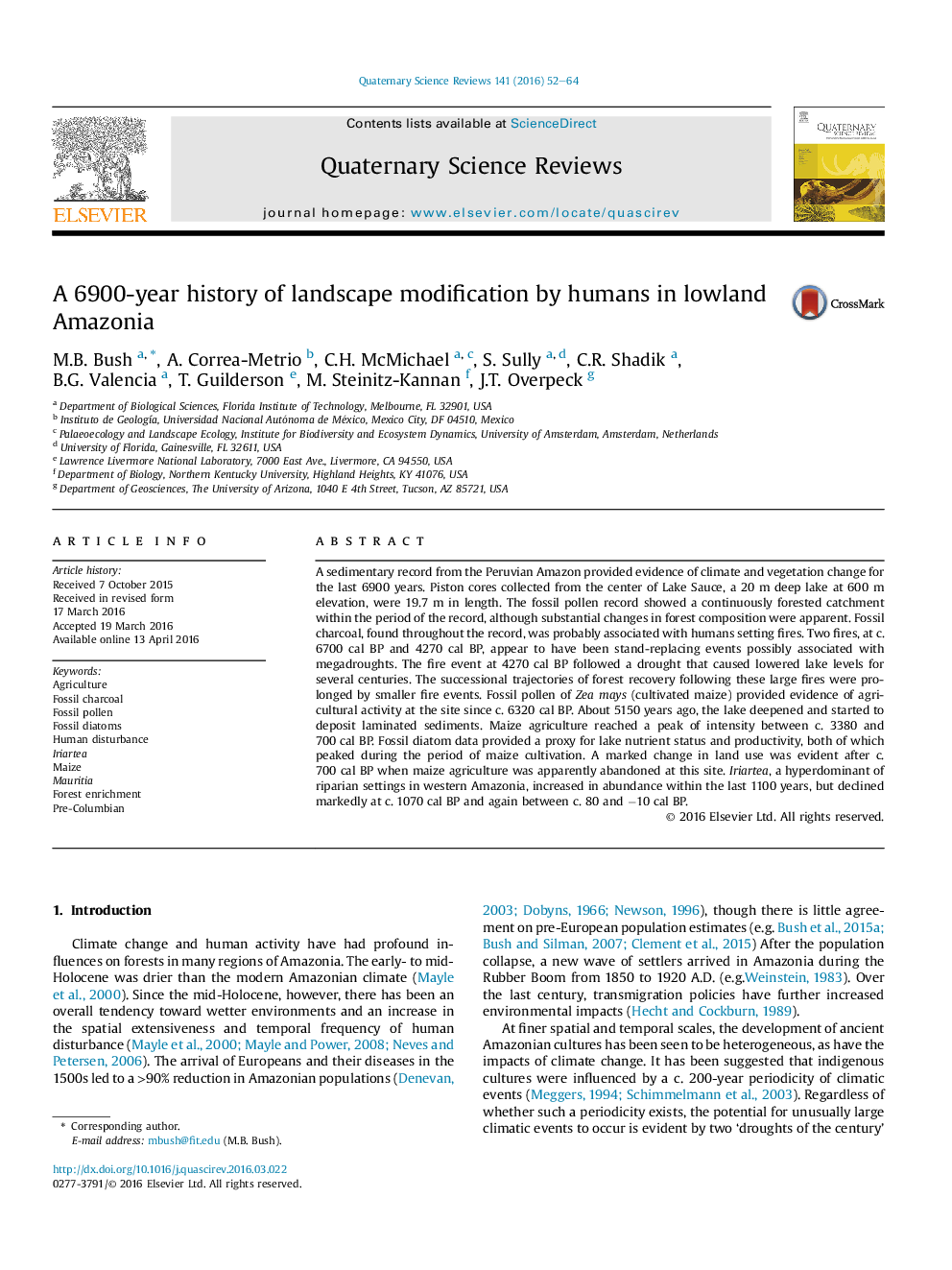| کد مقاله | کد نشریه | سال انتشار | مقاله انگلیسی | نسخه تمام متن |
|---|---|---|---|---|
| 4735250 | 1640794 | 2016 | 13 صفحه PDF | دانلود رایگان |
• High-resolution fossil pollen, diatom, and charcoal, record from the Peruvian Amazon that spans 6900 years.
• Evidence of human disturbance including maize agriculture throughout much of this record.
• Suggested megadroughts at c. 6700 BP and 4300 BP.
• Evidence of intensified agricultural production between c. 3380 BP and 700 BP.
• Apparent abandonment of maize agriculture c. 300 years before European arrival.
A sedimentary record from the Peruvian Amazon provided evidence of climate and vegetation change for the last 6900 years. Piston cores collected from the center of Lake Sauce, a 20 m deep lake at 600 m elevation, were 19.7 m in length. The fossil pollen record showed a continuously forested catchment within the period of the record, although substantial changes in forest composition were apparent. Fossil charcoal, found throughout the record, was probably associated with humans setting fires. Two fires, at c. 6700 cal BP and 4270 cal BP, appear to have been stand-replacing events possibly associated with megadroughts. The fire event at 4270 cal BP followed a drought that caused lowered lake levels for several centuries. The successional trajectories of forest recovery following these large fires were prolonged by smaller fire events. Fossil pollen of Zea mays (cultivated maize) provided evidence of agricultural activity at the site since c. 6320 cal BP. About 5150 years ago, the lake deepened and started to deposit laminated sediments. Maize agriculture reached a peak of intensity between c. 3380 and 700 cal BP. Fossil diatom data provided a proxy for lake nutrient status and productivity, both of which peaked during the period of maize cultivation. A marked change in land use was evident after c. 700 cal BP when maize agriculture was apparently abandoned at this site. Iriartea, a hyperdominant of riparian settings in western Amazonia, increased in abundance within the last 1100 years, but declined markedly at c. 1070 cal BP and again between c. 80 and −10 cal BP.
Journal: Quaternary Science Reviews - Volume 141, 1 June 2016, Pages 52–64
